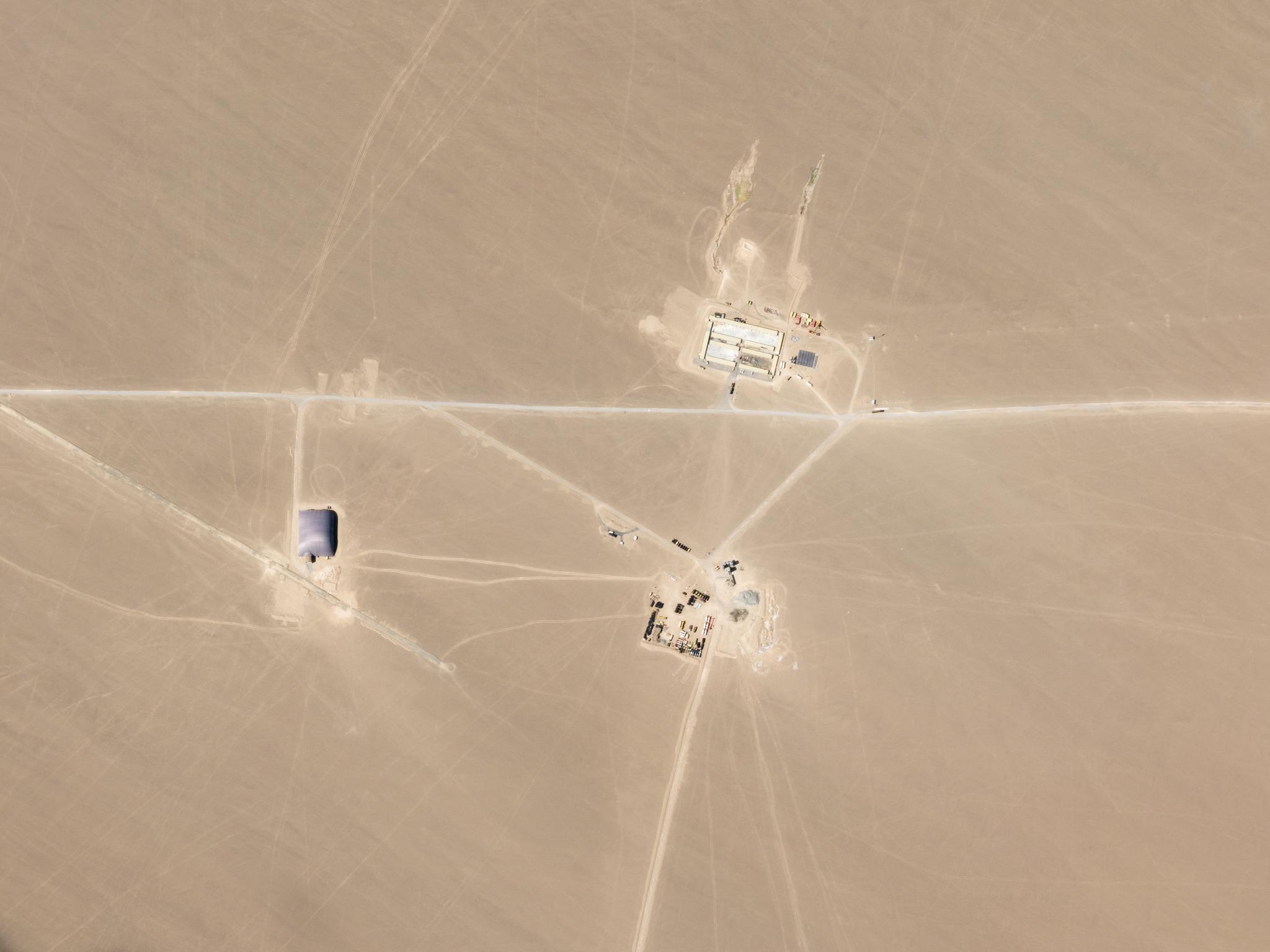New Space Opportunities Supplying the Future of Tip and Cue Strategies

Unsanctioned nuclear missile silos built in western China. © 2021, Planet Labs Inc. All Rights Reserved.
StoriesBefore the advent of satellite technology, global powers and organizations were able to set up strategic bases in remote static geographical locations to enable covert operations. In the modern era, however, activities such as building unsanctioned missiles in remote locations have evolved to operate in fleeting geographical points, often shifting bases weekly to avoid satellite monitoring. This has made it increasingly more difficult for defense and intelligence agencies to trace such projects; but with rapid-revisit satellite technology and layered satellite infrastructure, authorities are better equipped to trace operations through “tip and cue” workflows. What is tip and cue? In order to uncover hidden operations, defense and intelligence analysts leverage “tip and cue” systems. This workflow utilizes high frequency satellite constellations, like Planet’s 180+ Dove satellites that capture a daily, global picture of the Earth. This daily scan can “tip” analysts off to change in activity on the ground, enabling them to then “cue” a high-resolution satellite, such as a Planet SkySat, for an even closer look. Tip and cue strategies give organizations greater insight into situations happening on the ground, allowing them to respond to changes quickly and effectively. Such automated systems can reduce false alarms, increase effectiveness of broad area monitoring, and help discover emerging threats in unknown locations. While tip and cue strategies are already in effect, the future of tip and cue lies in New Space commercial satellite capabilities. What is needed for the future? Successful intelligence must enable ever more agile and informed decision-making. This will be supported by rapid-revisit satellite technology built within a layered sensing infrastructure and integrated with automated tip and cue systems. Such a system would leverage the capabilities of commercial vendors, like Planet, to offer integrated reconfigurable satellite constellations with enhanced learning capabilities. In this system, a satellite surveillance layer would automatically interrogate points and announce a tip to the integrated layered system. This automation would then guide a second layer of reconfigurable satellites to investigate the location and inspect it in more detail. How can Planet contribute? Through global rapid-revisit satellite monitoring, Planet can provide broad area change and anomaly detection like never before. To expand defense and intelligence capabilities, further advances in persistent satellite monitoring and spatial and temporal resolution are still needed. By diversifying and connecting sensing systems including high resolution, hyperspectral, and synthetic aperture radar data, analysts can have greater confidence of what materials and structures are in the locations of interest. “At Planet, we see advances in satellite technology, such as rapid-revisit and daily, global monitoring capabilities, as critical to the future of tip and cue strategies. Moving forward, we are excited to explore diverse sensing systems that can communicate with one another and help the intelligence community enhance their workflows and view previously undetected changes in remote locations,” said Jon Powers at Planet Federal. For a deeper dive, read our full white paper on the future of tip and cue capabilities. Planet recently entered into a definitive merger agreement with dMY Technology Group, Inc. IV (NYSE:DMYQ), a special purpose acquisition company, to become a publicly-traded company later this year.

Ready to Get Started
Connect with a member of our Sales team. We'll help you find the right products and pricing for your needs

